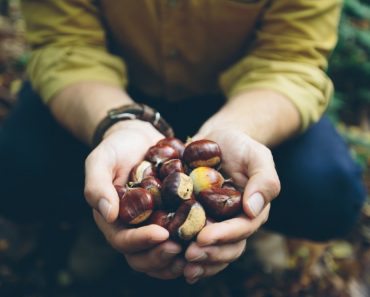As winter is in full force, the telltale signs of sneezes, sniffles, and the occasional fever are ever-present reminders of the importance of proactive self-care.
In times when the shelves may be bare of over-the-counter medications or a doctor’s prescription is out of reach, turning to the healing embrace of nature offers a reassuring alternative. This article aims to be your guide in exploring natural remedies that not only alleviate symptoms but also nurture your overall well-being.
Beyond the confines of conventional medicine, there lies a treasure trove of plant-based allies waiting to be discovered. Picture a garden adorned with herbs, roots, and leaves, each boasting potent properties to combat colds and flus. Alternatively, imagine a leisurely stroll through the woods, where nature’s pharmacy unveils itself in the form of wild, medicinal wonders.
My role as an experienced forager is to empower my readers with knowledge, encouraging a return to the ancient wisdom of herbal remedies. I believe it’s important to discover how these botanical companions can be grown, harvested, and transformed into potent elixirs to bolster your immune system and bid farewell to seasonal maladies.
Embrace this short reminder of traditional healing as we rediscover the age-old art of using plants as allies in the battle against colds and flus, transforming your approach to health into a holistic journey guided by the wisdom of the earth.
Let’s explore five plants that can serve as natural remedies for colds and flus, whether they’re cultivated in your garden or foraged in the wild.
1. Echinacea (Echinacea purpurea)
Growing and Foraging:
Echinacea is native to the central and southeastern regions of the United States, often found in open woods, prairies, and cultivated gardens. It’s also commonly cultivated in other regions for its medicinal properties.
Wild echinacea can be foraged in late summer to early fall when the plant is in bloom. Look for the distinctive purple coneflowers with a spiky, cone-shaped center. Harvest the flower heads, leaves, and roots.
To grow echinacea in your garden:
Planting: Choose a sunny location with well-drained soil. Sow seeds in the spring or fall, or transplant established plants.
Watering: Echinacea is drought-tolerant but benefits from regular watering during dry spells.
Care: Cut the spent flowers to encourage continuous blooming. Divide clumps every few years to maintain plant health.
Medicinal Use:
Echinacea is celebrated for its immune-boosting properties. The roots, leaves, and flowers contain compounds like echinacoside and alkamides that stimulate the immune system.
Preparation:
Tea: Prepare a tea by steeping dried echinacea leaves or flowers in hot water. Drink this tea regularly to enhance your immune response.
Tincture: Tinctures made from echinacea roots are also common. Consult herbalists or guides for proper dosage.
Cold and Flu Relief: Echinacea can help alleviate symptoms of colds and flus, reducing their duration and severity. It is particularly effective when taken at the onset of symptoms.
2. Peppermint (Mentha × piperita):
Growing and Foraging:
Peppermint is a hardy herb that thrives in various climates across the United States. It is often found in moist areas, along stream banks, and in partially shaded locations.
While peppermint is commonly cultivated, it can also be found in the wild. Look for its distinctive serrated leaves and a refreshing minty aroma. Forage in the late spring to early summer when the plant is in full bloom.
To grow peppermint in your garden:
Planting: Choose a partially shaded area with well-drained soil. Peppermint is known to spread, so consider planting it in containers to control its growth.
Watering: Keep the soil consistently moist. Peppermint benefits from regular watering, especially during dry spells.
Care: Prune the plant regularly to encourage bushier growth and prevent it from becoming too leggy.
Medicinal Use:
Peppermint contains menthol, which acts as a natural decongestant and can help relieve respiratory issues associated with colds and flus.
Preparation:
Peppermint Tea: Harvest fresh or dried peppermint leaves to make a soothing tea. Inhaling the steam from the tea can help clear nasal passages.
Steam Inhalation: Boil fresh peppermint leaves in water, place a towel over your head, and inhale the steam to ease congestion.
Soothing Sore Throats: Peppermint’s antimicrobial properties make it effective in soothing sore throats.
Alleviating Nausea: Peppermint tea may also help alleviate nausea, a common symptom of the flu.
Note: While peppermint is generally safe, excessive consumption may lead to side effects. Individuals with gastroesophageal reflux disease (GERD) should use caution. As with any herbal remedy, consult with a healthcare professional, especially if you are pregnant, nursing, or on medications.
3. Elderberry (Sambucus nigra):
Growing and Foraging:
Elderberry bushes are native to various regions of the United States, particularly in moist, temperate climates. They can be found in the wild along riverbanks, forests, and open fields.
Elderberries are typically ready for harvest in late summer to early fall when the clusters of small, dark purple-black berries are ripe. Harvest the entire cluster and ensure proper identification to avoid toxic look-alike species.
To grow elderberries in your garden:
Planting: Choose a sunny location with well-drained soil. Elderberries prefer slightly acidic to neutral soil.
Watering: Keep the soil consistently moist, especially during the growing season.
Care: Prune elderberry bushes regularly to encourage airflow and reduce the risk of diseases.
Medicinal Use:
Elderberries are rich in antioxidants, particularly flavonoids, and are known for their immune-boosting properties.
Preparation:
Elderberry Syrup: This is one of the most popular preparations. Simmer the berries with water, strain, and mix the liquid with honey. This syrup can be taken regularly during cold and flu season.
Elderberry Tea: Steep dried elderberries in hot water to make a simple and effective tea.
Reducing Cold and Flu Symptoms: Elderberry has been shown to reduce the severity and duration of cold and flu symptoms, making it a valuable addition to your natural remedy toolkit.
Note: While elderberries are generally safe, consuming raw or unripe berries can lead to nausea and vomiting. Always cook or properly prepare elderberries before consumption. Additionally, if you have underlying health conditions or are taking medications, consult with a healthcare professional before incorporating elderberry into your routine.
4. Garlic (Allium sativum):
Growing and Foraging:
Garlic is widely cultivated and adapts well to various climates across the United States. It is not typically foraged in the wild but is commonly grown in home gardens.
While wild garlic varieties exist, it’s important to note that foraging for these wild varieties requires accurate identification skills. For most, growing garlic at home is a more practical and reliable option.
To grow garlic in your garden:
Planting: The planting occurs typically in the fall for a summer harvest. Separate the garlic bulbs into individual cloves and make sure you plant them with the pointed end facing up.
Soil and Sun: Choose well-drained soil enriched with organic matter. Garlic prefers full sunlight.
Watering: Keep the soil consistently moist but not waterlogged.
Medicinal Use:
Garlic is celebrated for its potent antibacterial, antiviral, and antifungal properties.
Preparation:
Raw Consumption: Consuming raw garlic can be effective, but it’s strong and may be hard on the stomach. Consider mincing it and adding it to foods like honey or yogurt.
Garlic Infused Honey: Combine minced garlic with honey and let it infuse for a few days. This mixture can be taken by the spoonful during cold and flu season.
Immune System Support: Garlic is known to stimulate the production of white blood cells, enhancing the immune system’s ability to fight off infections.
Note: While garlic is generally safe for most people, excessive consumption can lead to digestive issues. If you have allergies or are on medications, consult with a healthcare professional before incorporating garlic into your routine.
5. Thyme (Thymus vulgaris):
Growing and Foraging:
Thyme is one of the versatile herbs that can be grown throughout the United States. It’s often found in sunny, well-drained areas and is a common culinary herb.
Wild thyme varieties can be foraged in dry, rocky soils, and open fields. Look for low-growing plants with small, aromatic leaves.
To grow thyme in your garden:
Planting: Choose a sunny location with well-drained soil. Thyme can be grown from seeds, seedlings, or by dividing established plants.
Watering: Thyme prefers drier conditions, so water sparingly once the plant is established.
Care: Trim thyme regularly to encourage bushy growth.
Medicinal Use:
Thyme contains compounds like thymol, which have strong antiviral and antibacterial properties.
Preparation:
Thyme Infusions: Make a thyme infusion by steeping fresh or dried thyme leaves in hot water. This can be consumed as tea to alleviate respiratory issues.
Steam Inhalation: Inhaling steam from a thyme infusion can help clear nasal passages and soothe coughs.
Respiratory Health: Thyme is particularly effective in addressing respiratory issues, making it a valuable herb for relieving symptoms associated with colds and flu.
Note: Thyme is generally safe when used in culinary amounts. However, if you are pregnant, nursing, or have allergies, consult with a healthcare professional before using thyme medicinally.
Concluding
So, here’s the wrap-up: when the sniffles and sneezes hit, nature’s got our back. We talked about a bunch of plants that are basically like nature’s medicine cabinet.
Whether you’re growing these plants or finding them out in the wild, they’re like our health guardians. They’re not just fixes for when we’re feeling under the weather; they’re a reminder to take care of ourselves, kind of like creating our own little wellness refuge.
So, let’s keep it simple. These plants are our allies, helping us out when we need it most. It’s not just about feeling better; it’s about tuning into the natural world around us.




























